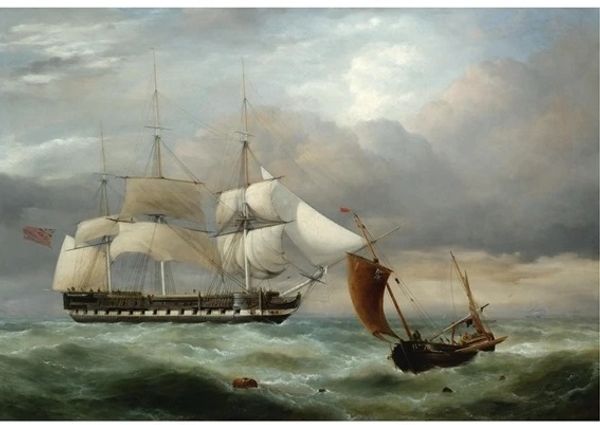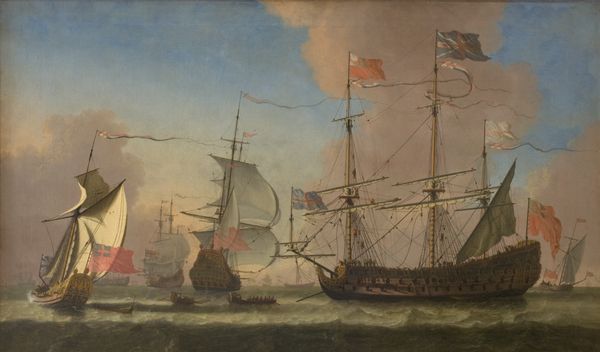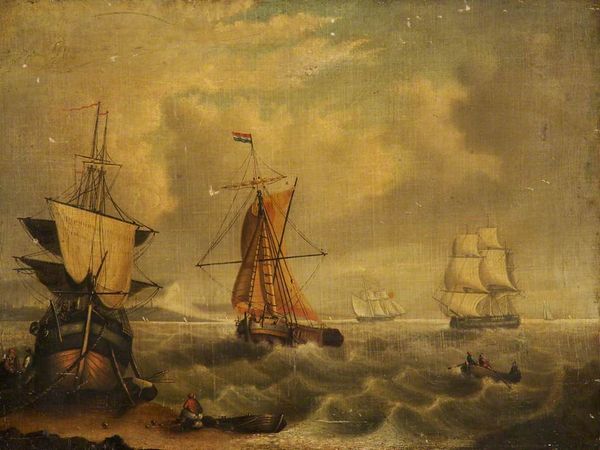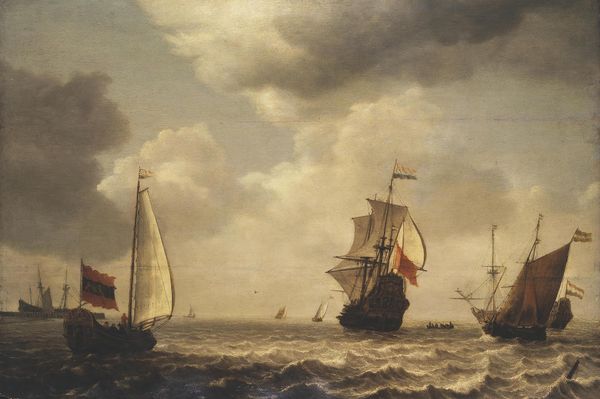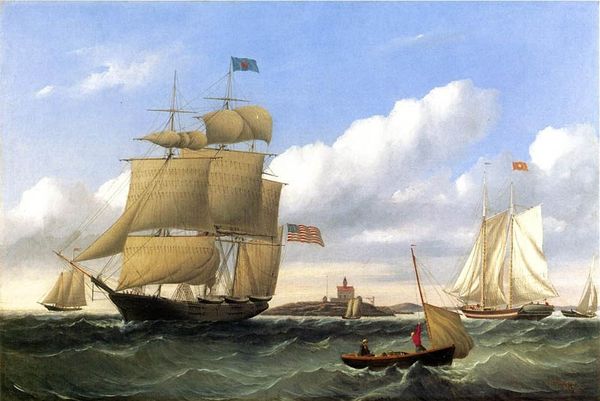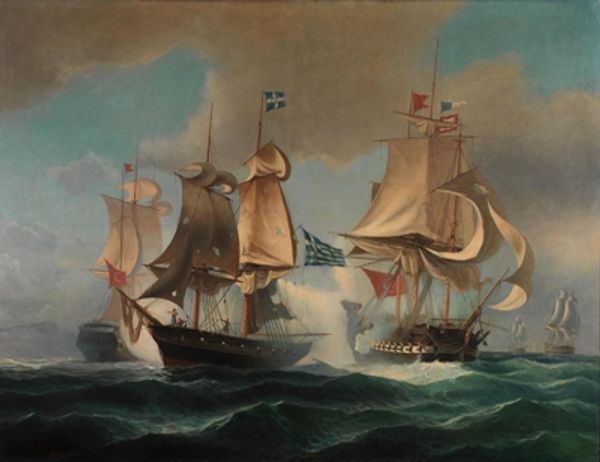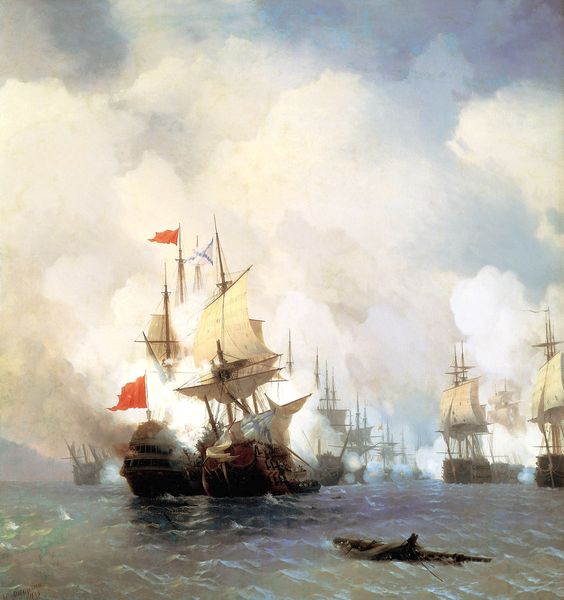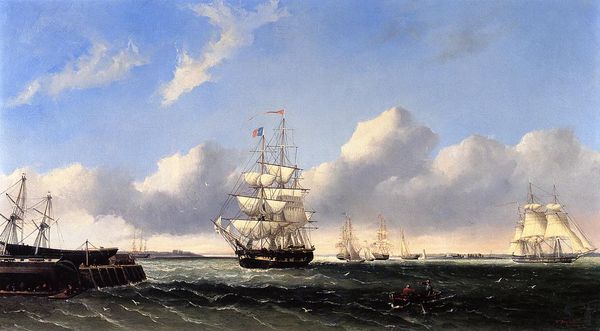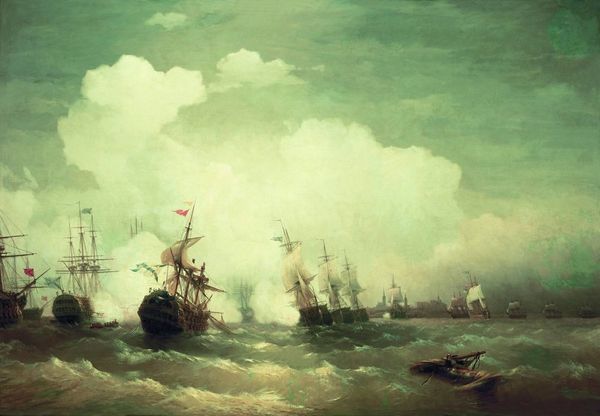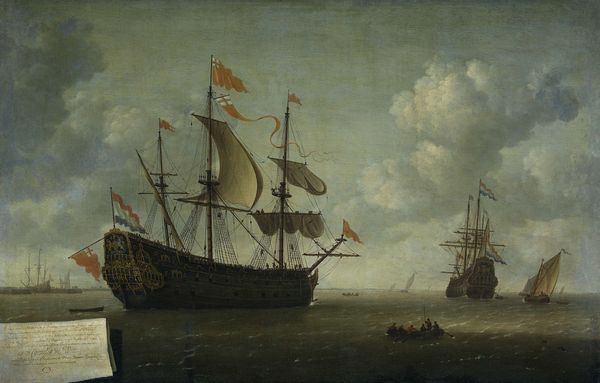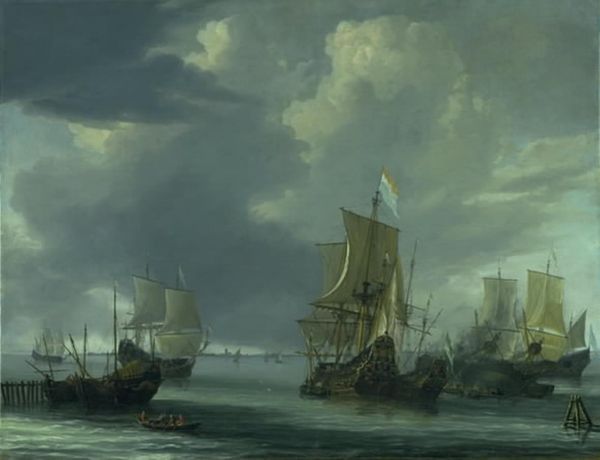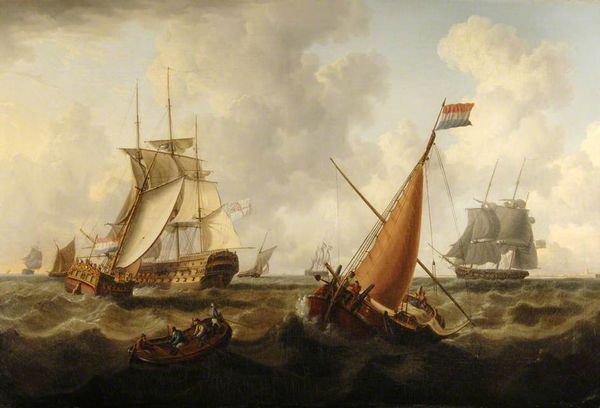
Dimensions: support: 368 x 1016 mm
Copyright: CC-BY-NC-ND 4.0 DEED, Photo: Tate
Editor: So, we’re looking at “A Flagship before the Wind with other Vessels” by Charles Brooking. It’s hard to pinpoint the date, but it looks like oil on canvas. There's such a dramatic sky! What do you make of it all? Curator: Ah, Brooking! He captures the sea's restless soul, doesn't he? Notice how the light kisses the sails, almost like stage lighting. It evokes a sense of British maritime power. Do you feel the weight of history here, or something else? Editor: I do now that you mention it! I was focusing on the light but seeing the ships as actors really changes how I read the painting. Curator: Exactly! And isn't it wonderful how one little spark of insight can completely transform a scene?
Comments
tate 8 months ago
⋮
http://www.tate.org.uk/art/artworks/brooking-a-flagship-before-the-wind-with-other-vessels-n04003
Join the conversation
Join millions of artists and users on Artera today and experience the ultimate creative platform.
tate 8 months ago
⋮
As an island nation, the British have an emotional attachment to the sea, and marine painting, based on Dutch models, developed earlier in Britain than, for instance, landscape painting. By the l740s it reflected Britain's rapidly growing naval and mercantile power.Brooking was one of the most promising marine painters of the mid-century, but died in his thirty-sixth year. He grew up among the shipyards of Deptford, probably the son of a painter- decorator, and trained by copying Dutch pictures. His style shows that he belonged to the new generation of painters to whom the varying moods of nature, translucent atmosphere and changing play of light were as important as the ships themselves. Gallery label, September 2004
